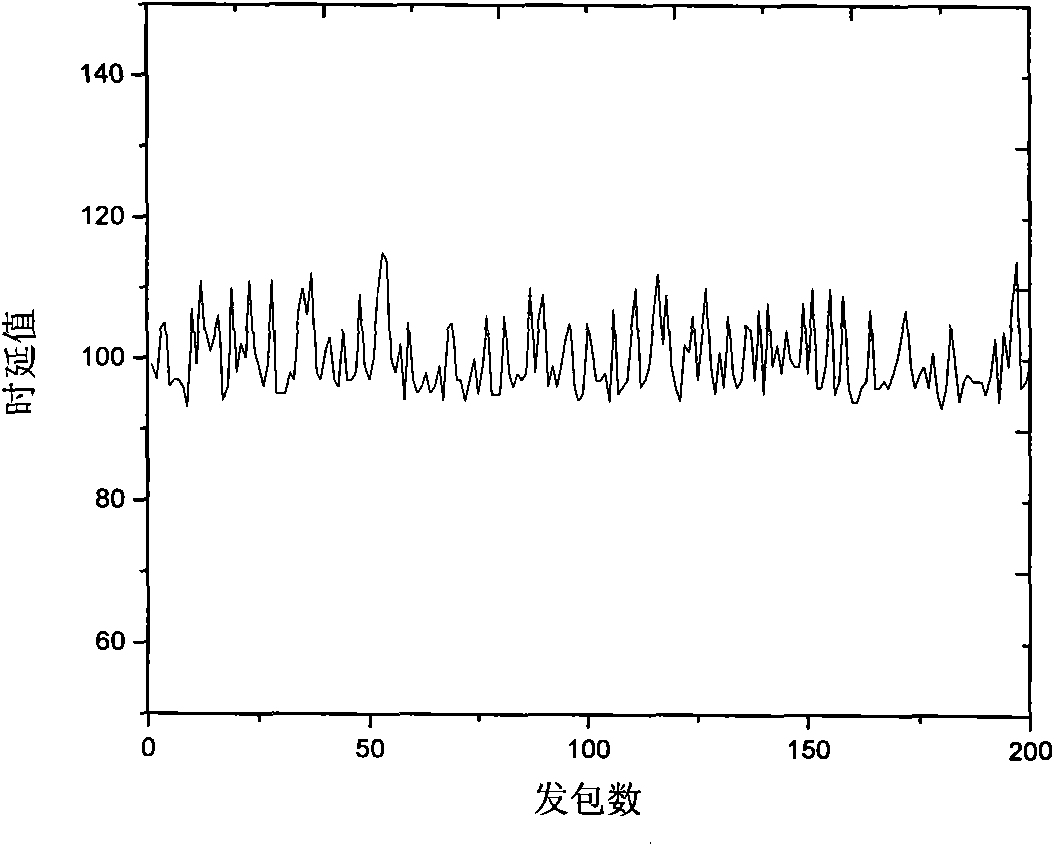Voice experience quality evaluation platform based on QoS (quality of service) and evaluation method
A technology of quality of experience and evaluation method, applied in the field of network communication, which can solve the problems of difficult QoS parameters, lack of stability of the experimental platform, and inability to meet the needs of QoE research.
- Summary
- Abstract
- Description
- Claims
- Application Information
AI Technical Summary
Problems solved by technology
Method used
Image
Examples
Embodiment 1
[0043] This embodiment provides a QoS-based voice quality of experience (QoE) evaluation platform, such as figure 1 As shown, the platform mainly includes the following seven modules:
[0044] 1) a time synchronization module, used to realize the time synchronization between the voice sending end and the receiving end;
[0045] 2) The voice playback module is used to play a standard voice file using an audio player at the sending end to simulate call behavior;
[0046] 3) The voice transmission module is used to establish a voice transmission channel based on the network. This module is divided into two parts: one part is used to encode the voice signal at the sending end and transmit it to the network, and the other part is used to receive the network signal at the receiving end. Medium voice data, play the voice signal after decoding;
[0047] 4) The network simulation module is used to simulate the IP network environment and realize the simulation of network delay, jitter, ...
Embodiment 2
[0067] This embodiment adopts the QoS-based voice quality of experience (QoE) evaluation platform and evaluation method described in Embodiment 1 to evaluate the impact of packet loss (packet loss) on voice quality, and the specific evaluation steps are as follows:
[0068] Step A1, set the following parameters in NIST Net:
[0069] Delay: 50ms; Jitter: 0ms; Packet loss rate: 0%, 0.2%, 0.4%, ..., 3.6%, 3.8%, 4%;
[0070] Step B1, set the transmission protocol on Open Phone as RTP; encode G.711A-LAW; jitter buffer 40ms; voice packet size is 10ms, 20ms, 30ms, 40ms respectively;
[0071] Step C1, set volume in Power mixer to 25-35; waveform to 40-50; recording: 1-10;
[0072] Step D1 performs clock synchronization;
[0073] Step E1, set the audio file start playing time, set TI=15 seconds according to the size of the source file; number of cycles=10;
[0074] Steps F1, G1, H1, the sending end uses audio player software to play the voice source file, and the receiving end start...
Embodiment 3
[0077] This embodiment adopts the QoS-based voice quality of experience (QoE) evaluation platform and evaluation method described in Embodiment 1 to evaluate the impact of jitter (Jitter) on voice quality, and the specific evaluation steps are as follows:
[0078] Step A2, set the following parameters in NIST Net:
[0079] Delay is 50ms; packet loss rate is 0%; Jitter: 0ms, 2ms, 4ms, 6ms, 8ms, 12ms, 14ms, 16ms;
[0080] Step B2, set the transmission protocol in Open Phone as RTP; encode G.711A-LAW; the voice packet size is 20ms; the jitter buffer is 20ms, 40ms, 60ms, 80ms respectively;
[0081] Step C2, set volume in Power mixer to 25-35; waveform to 40-50; recording: 1-10;
[0082] Step D2 performs clock synchronization;
[0083] Step E2, set the audio file start playing time, set TI=15 seconds according to the size of the source file; number of cycles=10;
[0084] Steps F2, G2, H2, the sending end uses audio player software to play the voice source file, and the receiving...
PUM
 Login to View More
Login to View More Abstract
Description
Claims
Application Information
 Login to View More
Login to View More - R&D
- Intellectual Property
- Life Sciences
- Materials
- Tech Scout
- Unparalleled Data Quality
- Higher Quality Content
- 60% Fewer Hallucinations
Browse by: Latest US Patents, China's latest patents, Technical Efficacy Thesaurus, Application Domain, Technology Topic, Popular Technical Reports.
© 2025 PatSnap. All rights reserved.Legal|Privacy policy|Modern Slavery Act Transparency Statement|Sitemap|About US| Contact US: help@patsnap.com



